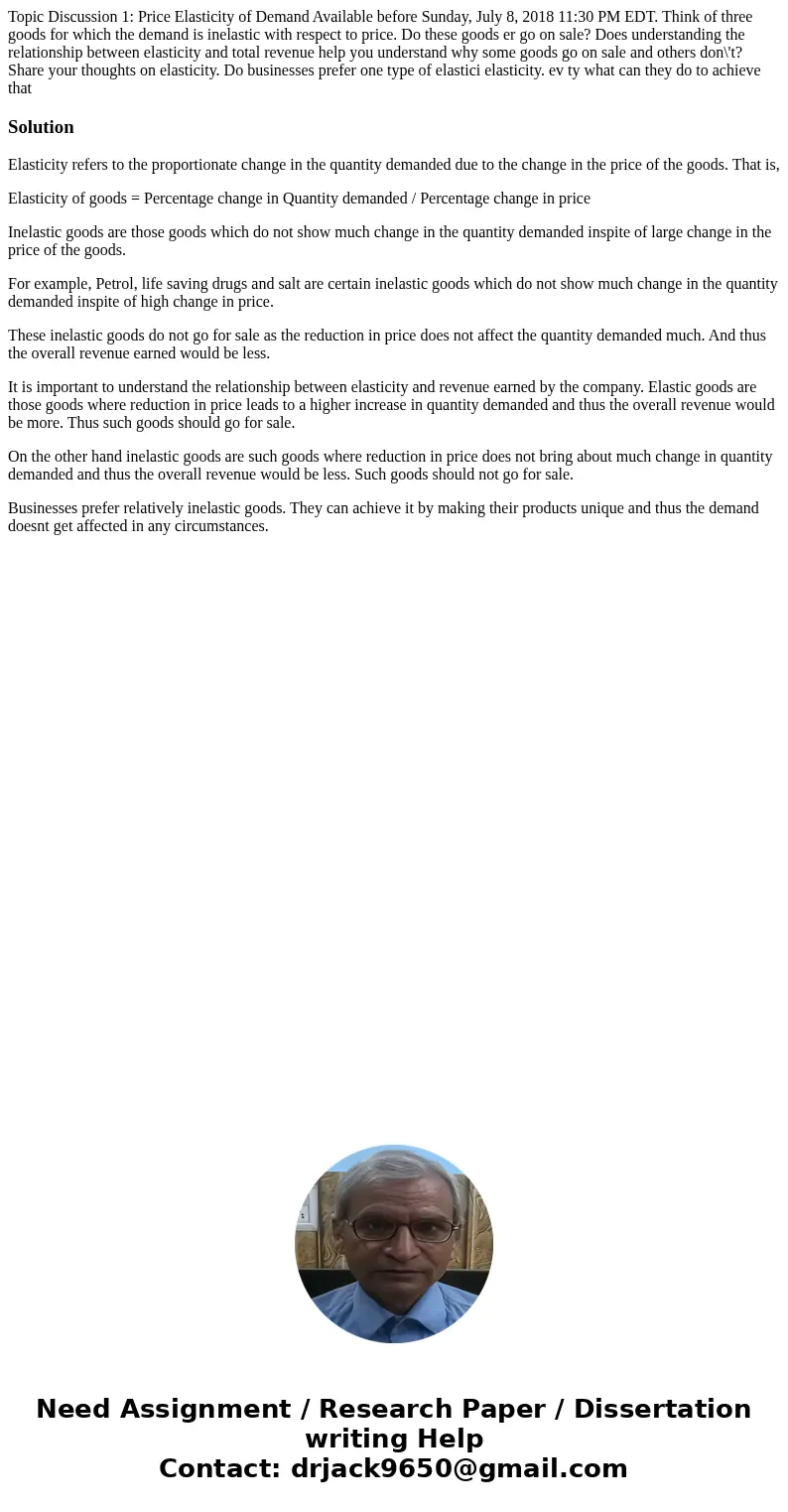Topic Discussion 1 Price Elasticity of Demand Available befo
Solution
Elasticity refers to the proportionate change in the quantity demanded due to the change in the price of the goods. That is,
Elasticity of goods = Percentage change in Quantity demanded / Percentage change in price
Inelastic goods are those goods which do not show much change in the quantity demanded inspite of large change in the price of the goods.
For example, Petrol, life saving drugs and salt are certain inelastic goods which do not show much change in the quantity demanded inspite of high change in price.
These inelastic goods do not go for sale as the reduction in price does not affect the quantity demanded much. And thus the overall revenue earned would be less.
It is important to understand the relationship between elasticity and revenue earned by the company. Elastic goods are those goods where reduction in price leads to a higher increase in quantity demanded and thus the overall revenue would be more. Thus such goods should go for sale.
On the other hand inelastic goods are such goods where reduction in price does not bring about much change in quantity demanded and thus the overall revenue would be less. Such goods should not go for sale.
Businesses prefer relatively inelastic goods. They can achieve it by making their products unique and thus the demand doesnt get affected in any circumstances.

 Homework Sourse
Homework Sourse